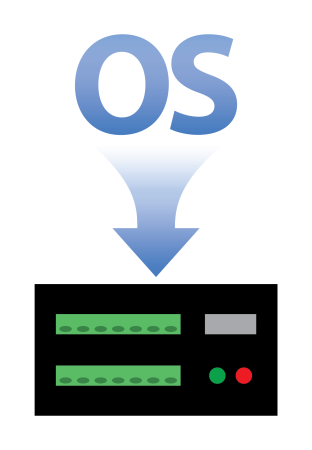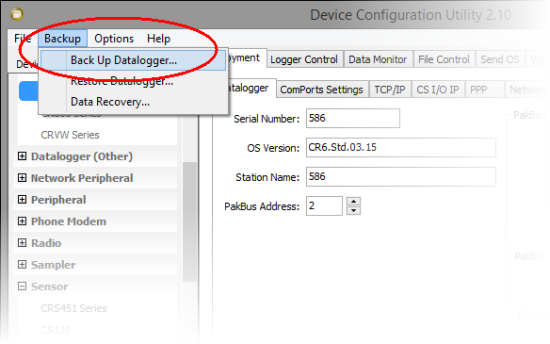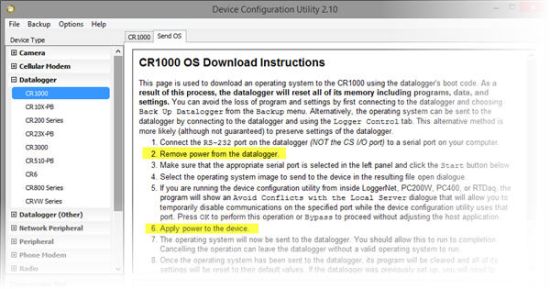Helpful Hints for Updating Your Data Logger's OS
by Janet Albers | Updated: 02/10/2016 | Comments: 0

Periodically we release new operating systems (OSs) that include new functions and instructions, as well as enhancements or bug fixes for existing functions and instructions. If you are asked to update your OS or need a newly added feature for your application, this article provides some hints for success.
When you download an OS from the Campbell Scientific website, it is bundled in an executable file with a precompiler and CRBasic support files. Running the downloaded .exe file places all of the files in default directories for subsequent use. The next time you open the CRBasic Editor, new instructions will show up in the Instruction pick list.
The OS file that needs to be sent to the data logger has a .obj extension. For example, CR1000.Std.28.obj is the OS file you would send to a CR1000 datalogger.
You can find a list of new features and enhancements by following these steps:
- Visit our Downloads web page.
- Click the download you're interested in.
- At the end of the description of the download, click the View Update History link.
It is important to note that data logger operating systems are not interchangeable. Each data logger model has its own OS, and you must use the matching OS for your data logger model. For example, if you attempt to load a CR6 OS into a CR1000 datalogger, it will fail. Instead, load a CR1000 OS into a CR1000 datalogger.
It is NOT necessary to update your OS incrementally. You can skip updates. For example, you can go from OS 27 to OS 28.02 for your data logger.
|
Note: Upgrading from versions prior to version 28 of the Operating System will reset the data logger’s CPU drive. This is due to a change in the format of the file system from FAT16 to FAT32. In order for the data logger to operate correctly, as part of the upgrade, the CPU drive is formatted to FAT32. Any programs stored and running from the CPU drive will be lost. It is not recommended to update the data logger’s Operating System over a remote connection where program control regulates the communication equipment (turning it on or off, etc.). In these cases, an on-site visit and a backup using the Device Configuration Utility's (DevConfig’s) backup utility is necessary to update the data logger’s Operating System. |
Tip: It is prudent to make a backup of hardware system settings and files prior to updating an operating system. The Device Configuration Utility (version 2.08 or later) has a backup and restore wizard that makes this easy:

When you update an OS using the Send OS tab of the Device Configuration Utility, it is critical that you follow the instructions listed. For example, some data loggers need to be powered down and then back up again.

Our Downloads web page offers the latest software and OS upgrades. Search for your data logger model from the list of data logger operating systems, and download your OS upgrade free of charge. Now you’re ready to take advantage of the new features in the data logger operating system.
One more thing: There are other ways to update an OS; this article only addresses the most common method. The videos listed below provide additional detail.
|
Recommended for You: To learn more about updating an operating system, watch the following videos: |
If you have any comments or questions, please post them below.
















 Janet Albers, now retired, was a Senior Technical Writer. She enjoyed sharing tips, simplifying concepts, and guiding our clients to a successful project. She had been with Campbell Scientific, Inc. longer than the CR1000, but not quite as long as the CR10X. After work hours, Janet enjoyed the outdoors with her boys and dogs.
Janet Albers, now retired, was a Senior Technical Writer. She enjoyed sharing tips, simplifying concepts, and guiding our clients to a successful project. She had been with Campbell Scientific, Inc. longer than the CR1000, but not quite as long as the CR10X. After work hours, Janet enjoyed the outdoors with her boys and dogs.
Comments
Please log in or register to comment.